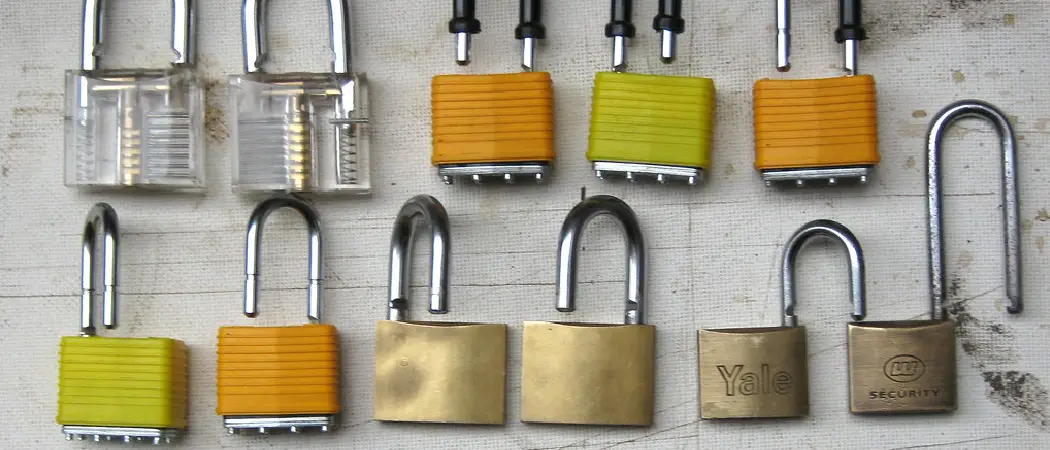Have you ever found yourself in a situation where you’ve lost the key to a small padlock, and you need to access what’s locked behind it? You’re not alone, and there are ways around it. In this blog post, we will guide you through the steps of how to open a small padlock without a key.
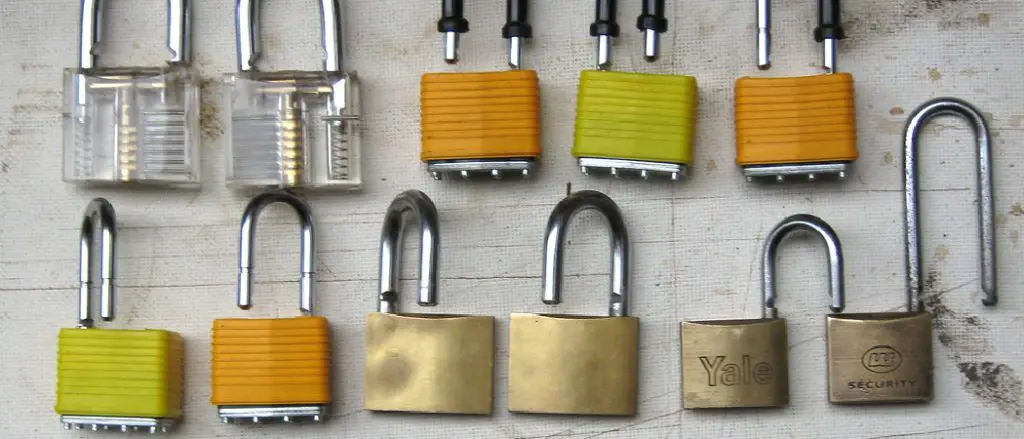
We don’t encourage unethical use of this information, but we believe in providing knowledge for emergency situations or honest mistakes. Remember, a little bit of knowledge can go a long way, especially when it’s about how to open a small padlock without a key. So let’s dive in and learn together!
Reasons for Opening a Small Padlock without A Key
Lost Key
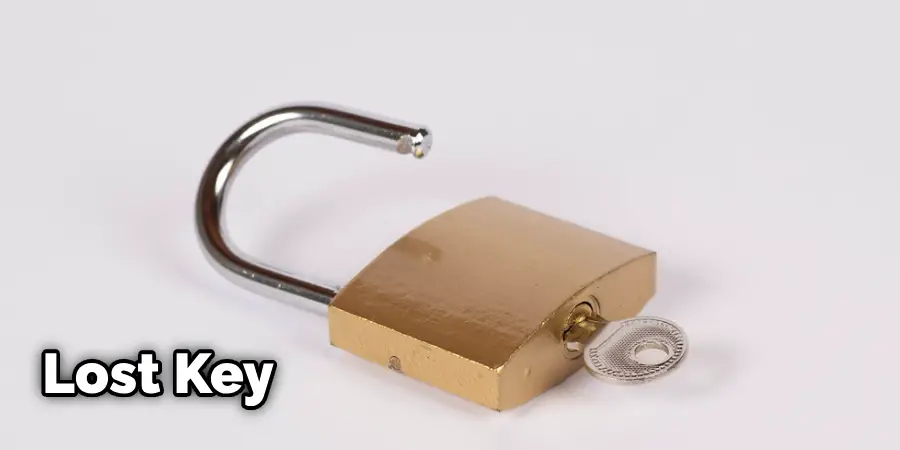
The most common reason for needing to open a small padlock without a key is, of course, losing the key. It can happen to anyone, and it’s incredibly frustrating when it does. But don’t worry; we’ve got you covered.
Forgotten Combination
Another common reason is forgetting the combination to unlock the padlock. This usually happens with combination padlocks, where you need to remember a specific sequence of numbers or symbols. Again, we have some tricks up our sleeve to help you out.
Emergency Situations
In some cases, there may be an emergency situation where accessing the locked item is crucial. For example, you might have locked your bike with a small padlock and lost the key while out on a ride. In such situations, knowing how to open a small padlock without a key can save the day.
Tools Required
To successfully unlock a small padlock without a key, you will need some tools that are easily available at home or can be purchased from any hardware store. These include:
- A Screwdriver (preferably flathead)
- A Hammer
- A Pair of Pliers
- A Paper Clip or Bobby Pin
9 Steps to Follow for How to Open a Small Padlock without A Key
Now that you have all the necessary tools let’s dive into the step-by-step process of how to open a small padlock without a key.
Step 1: Examine the Padlock
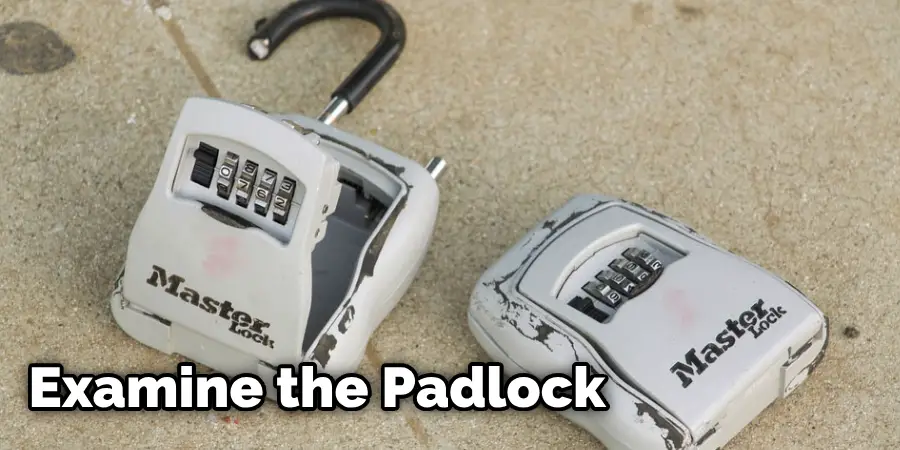
The first step is to carefully look at the padlock and determine what type it is. This will help you decide which unlocking method to use.
Step 2: Determine the Keyhole Location
Next, locate where the keyhole is on the padlock. It can be either in the center or on one of the sides.
Step 3: Remove the Screw
If there is a screw on the side of the padlock that holds it together, remove it using the flathead screwdriver.
Step 4: Use the Hammer and Pliers to Pry Open
With one hand, hold the padlock firmly in place, and with the other hand, use the pliers to grip and twist one side of the padlock. Use the hammer to gently tap on the pliers to create more force if needed. This should eventually break one side of the padlock, allowing you to remove it.
Step 5: Use a Bobby Pin or Paper Clip
If the above method doesn’t work, try using a bobby pin or paper clip to pick open the lock. Straighten out the bobby pin or paper clip and insert it into the keyhole, applying slight pressure while jiggling it around. This method works best with combination padlocks.
Step 6: Freeze the Padlock
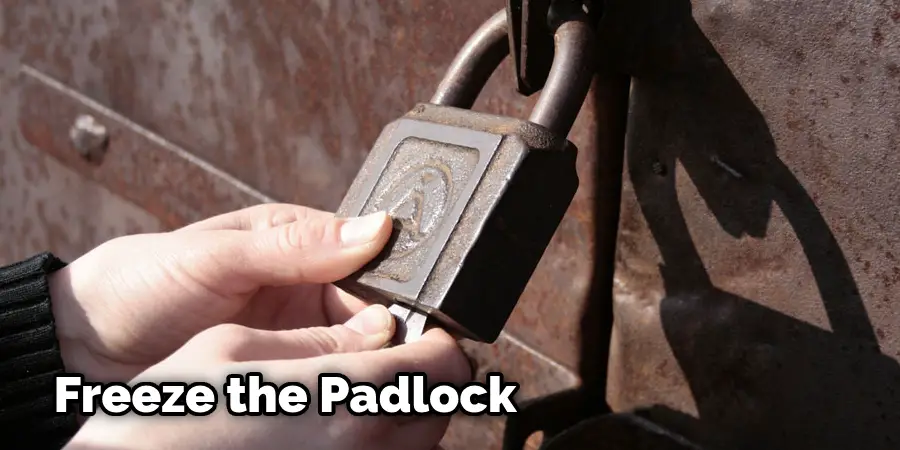
If your padlock is made of metal, you can try freezing it using a can of compressed air or liquid nitrogen. This will cause the metal to contract, making it easier to break or open.
Step 7: Use a Drill
This method should only be used as a last resort and is not recommended for expensive or important padlocks. Using a drill, create a small hole through the keyhole and then insert a small screwdriver or other object to twist and unlock the padlock.
Step 8: Try a Knife
If the padlock is made of plastic, you can use a knife to cut through the body of the lock and release whatever is locked inside.
Step 9: Call for Professional Help
If none of the above methods work or you feel uncomfortable attempting them, it’s best to call a professional locksmith for assistance. They have the necessary tools and expertise to open a small padlock without causing any damage.
Non-Destructive Methods on How to Open a Small Padlock without A Key
Some of the methods mentioned above may cause damage to the padlock, especially if it’s made of weaker materials. However, there are non-destructive methods that you can try as well.
- Using a shim: Insert a thin piece of metal or plastic between the body of the lock and the shackle to release it.
- Using tension wrench and pick: This method is similar to using a bobby pin or paper clip but with specialized tools.
- Using a bump key: This is a specially designed key that can be used to open many types of padlocks. However, this method may require some practice and skill.
8 Troubleshooting Tips while Opening a Small Padlock without A Key
1. Be Patient and Take Your Time:
Trying to rush through the process may lead to mistakes and damage.
2. Use Proper Tools:
Make sure you have the appropriate tools for your specific type of padlock.
3. Seek Help:
If you need more confidence or comfortable attempting the methods, seek help from a professional.
4. Check for Warnings:
Some padlocks may have warnings or instructions on how to open them without a key. Be sure to check before proceeding.
5. Keep the Padlock Steady:
Apply slight pressure to keep the padlock steady while attempting to open it.
6. Don’t Force Anything:
If a method isn’t working, don’t force it, as it may cause more damage.
7. Use Lubricant:
If the padlock is rusted or jammed, try using a lubricant like WD-40 to loosen it up before attempting any methods.
8. Use Protective Gear:
When using tools like a hammer or pliers, be sure to wear protective gear to avoid any injuries.
Safety Considerations for Opening a Small Padlock without A Key
Avoid Using Excessive Force:
Applying too much force can not only damage the padlock but also cause injury to yourself.
Understand the Risks:
Be aware of any potential dangers while attempting to open a small padlock without a key and take necessary precautions.
Use Proper Tools:
Using tools that are not intended for unlocking padlocks may lead to accidents or injuries.
Always use appropriate tools.
Seek Professional Help:
If you need help to open the padlock or are not confident in your abilities, it’s best to seek help from a professional locksmith.
How to Prevent Getting Locked Out
Prevention is always better than cure, and this rings especially true when it comes to locking yourself out. Here are some practical tips to avoid such a frustrating situation.
1. Keep a Spare Key:
One of the simplest and most effective ways to prevent being locked out is always to have a spare key. You can keep it in a hidden but easily accessible place or give it to someone you trust.
2. Use Combination Locks:
Opt for combination locks over key-based locks. This eliminates the issue of losing keys, as you just need to remember the combination to unlock.
3. Electronic Keyless Entry:
Consider installing an electronic keypad entry system on your doors. You’ll just need to remember a code to enter.
4. Lockbox:
A lockbox is a small, secure box that holds your keys inside. You can unlock the lockbox with a combination code.
5. Key Finder:
You can use key locators or key finder devices that use wireless technology to track your keys.
6. Regular Maintenance:
Make sure to maintain your locks regularly to prevent them from getting stuck or jammed.
7. Professional Key Duplication:
Get your keys duplicated by a professional locksmith. It is a small investment that can prevent a major hassle.
8. Keychain Habit:
Always returning your keys to the same place can help you keep track of them.
Remember, a little preparation can save you from a lot of trouble down the road.
What to Do if Your Key Breaks Inside the Lock
It can be incredibly frustrating when your key breaks off inside the lock. Here are some useful steps to address this situation:
1. Stay Calm:
Remember, panic can often make the situation worse. Keep your cool and assess your options.
2. Don’t Attempt to Unlock:
Avoid further attempts to unlock the door with the broken key, as this might push the broken piece further inside the lock.
3. Use Tweezers:
If the broken piece of the key is visible and protruding out, you may be able to retrieve it using a set of needle-nose tweezers. Be careful not to push the key further into the lock.
4. Employ Broken Key Extractor Tool:
If tweezers don’t work, consider using a broken key extractor tool. These are specially designed tools made for removing broken keys from locks.
5. Utilize a Thin Wire or Paperclip:
If you need a broken key extractor tool, a simple paperclip or a thin piece of wire could work as well. Insert the wire or paperclip along the edge of the key and try to pull the key out.
6. Apply Lubricant:
If the key is hard to retrieve, use a lubricant like WD-40. Spray it into the keyhole and then try using the extractor tool or tweezers.
7. Call a Locksmith:
If all else fails, it’s best to call a professional locksmith. They have the necessary skills and tools to remove the broken key without causing further damage to the lock.
Remember, attempting to extract a broken key on your own may cause more harm than good if not done properly. So, when in doubt, always call a professional to handle the situation.
Conclusion
In conclusion, dealing with a small padlock without a key may initially seem daunting and complicated. However, with the guidance provided in this blog post, one can learn the necessary techniques and precautions to tackle such a situation effectively.
From understanding different methods of opening a padlock to mastering the art of patience and appropriate use of tools, we have comprehensively covered the steps and safety measures involved.
Moreover, we have provided valuable tips on preventing lockouts and dealing with situations where your key breaks inside the lock. So, the next time you’re faced with the challenge of how to open a small padlock without a key, remember, armed with the right knowledge and tools, you can tackle it with confidence and ease.

